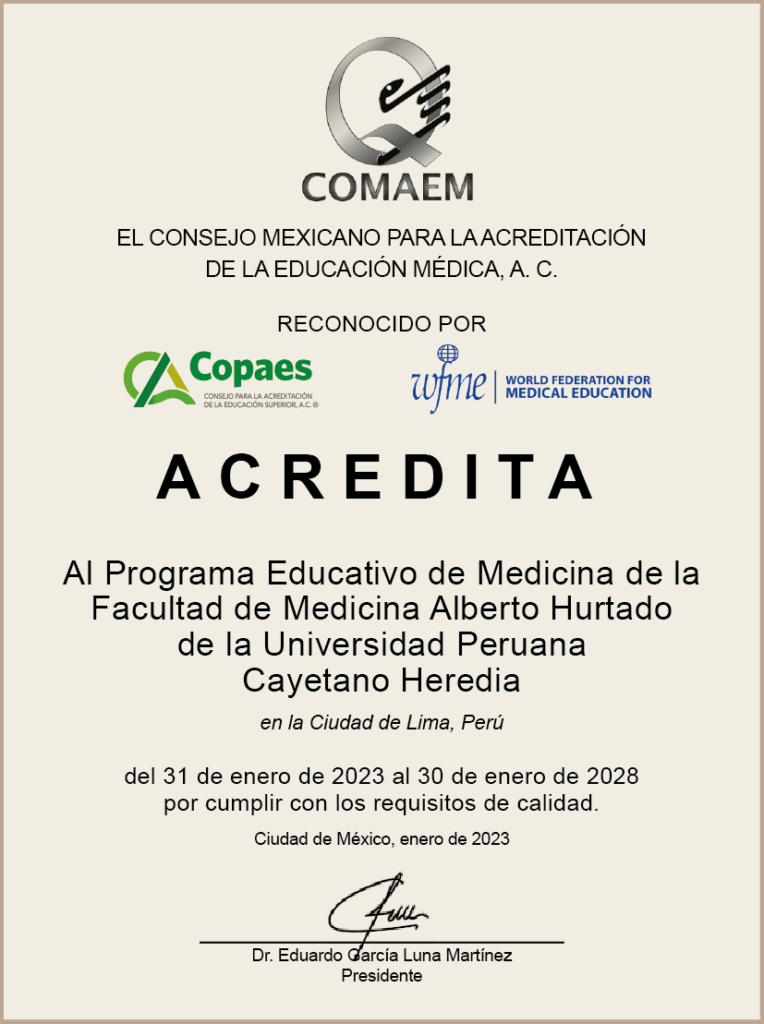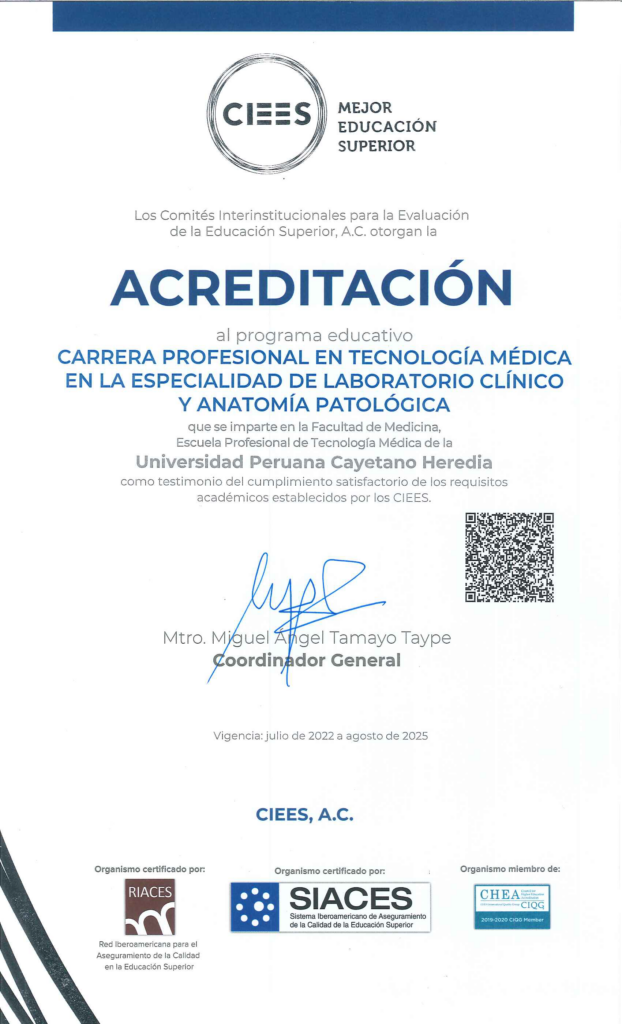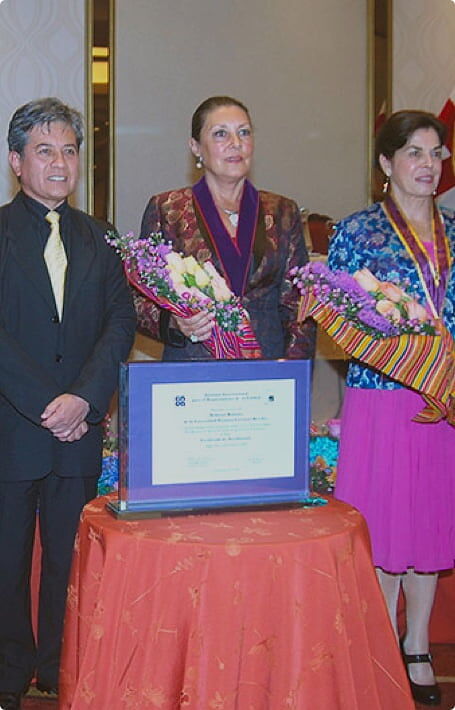Calidad
Unidad de Gestión de la Calidad y Gestión de Egresados
La Unidad de Gestión de la Calidad y Gestión de Egresados es la encargada de promover y asegurar el cumplimiento de las políticas y objetivos de calidad, de planificar, supervisar, evaluar y controlar el proceso de mejora continua de la calidad en los aspectos académicos y administrativos de las facultades así como planificar e implementar el sistema de gestión de egresados.
Son funciones de la Unidad de Gestión de la Calidad y Gestión de Egresados:
- Planificar, organizar, promover, ejecutar y controlar la gestión por procesos basada en la mejora continua de la calidad en las facultades.
- Monitorear el cumplimiento del POA de las Facultades, mediante el cumplimiento de sus indicadores, en coordinación con la Unidad Administrativa.
- Planificar, organizar y ejecutar los procesos y actividades de autoevaluación, acreditación y re-acreditación, así como de licenciamiento de los programas académicos de las facultades, en coordinación con todos y cada uno de los órganos de apoyo, de asesoría y de línea de la Facultad.
- Asegurar el cumplimiento de las normas académico administrativas.
- Informar y difundir los asuntos relacionados a las mejoras de la calidad.
- Planificar, implementar, ejecutar y asegurar el cumplimiento de la política de gestión de egresados de la Facultades.
- Elaborar el MOF y el manual de normas y procedimientos de la unidad y elevarlo al Consejo Integrado de Facultades.
- Asegurar el cumplimiento de sus indicadores de gestión.
- Representar a las facultades en la Dirección Universitaria de Calidad y en otras instancias que correspondan.
- Otras funciones inherentes al área, asignadas por el Decano.
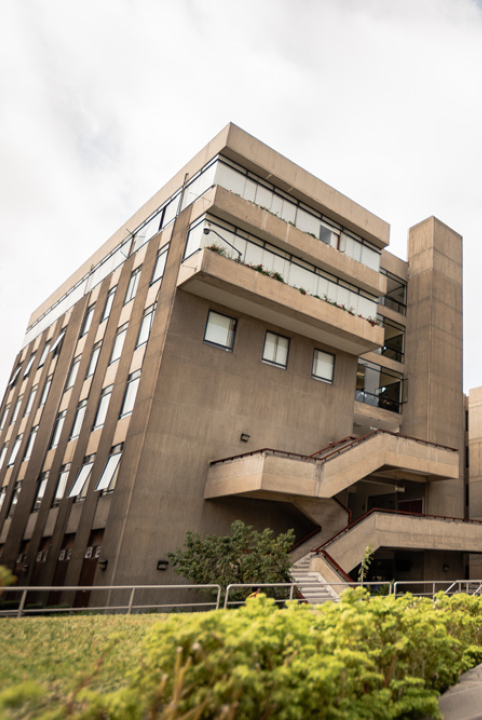
Nuestro Licenciamiento
La Facultad de Medicina Alberto Hurtado de la Universidad Peruana Cayetano Heredia, tiene el orgullo de comunicar que nuestra carrera profesional de Medicina es la primera en haber logrado el Licenciamiento con la Superintendencia Nacional de Educación Superior Universitaria (SUNEDU), y por un período de diez años, el plazo máximo que otorga dicha institución.
Acreditación Internacional
Las acreditaciones buscan la mejora continua de los sistemas y procedimientos de gestión administrativa y académica así mismo certifican que un programa cumple con los criterios de calidad internacionales para la educación superior. Además, facilita la movilización de nuestros egresados a diferentes lugares del mundo.
La Facultad de Medicina Alberto Hurtado en la búsqueda de ser líderes en la formación de profesionales de la salud asumió el reto de acreditar internacionalmente sus programas de Medicina y de Tecnología Médica.
El programa de Medicina ha sido acreditado en dos oportunidades, en el 2008 recibió este reconocimiento por 5 años con la Red Internacional de Evaluadores (RIEV) y en el 2015, también por 5 años, con el propio IAC-CINDA. Actualmente se encuentra acreditado internacionalmente por el Consejo Mexicano para la Acreditación de la Educación Médica (COMAEM) con una vigencia de 5 años, del 31 de enero del 2023 al 30 de enero del año 2028. Es una agencia acreditadora reconocida por la Federación Mundial de Educación Médica (WFME, por sus siglas en inglés).
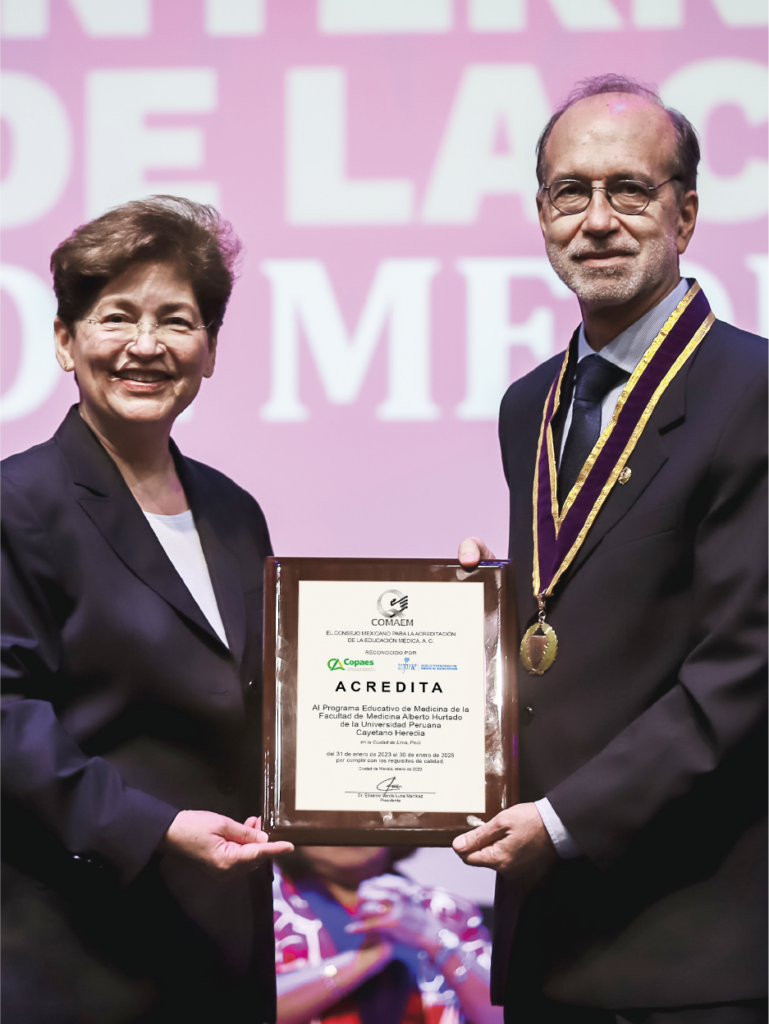
EQUIPO RESPONSABLE – Acreditación Internacional
Dr. Manuel Jorge Rodríguez Castro
Decano de las Facultades de Medicina, de Estomatología y de Enfermería
Dr. José Ignacio Caballero López
Vicedecano Facultad de Medicina
Unidad Integrada de Gestión de la Calidad y Gestión de Egresados
Jefa Dra. Milagros Carrasco Loyola
Representante de Medicina Dr. Fernando Enrique Durand Concha
Coordinador Ing. Jesús Alberto León Ticona
Apoyo Lic. César Gustavo Albornoz Tomé
El Programa de Tecnología Médica en la Especialidad de Laboratorio Clínico y Anatomía Patológica obtuvo en julio del año 2022 la acreditación internacional de parte de los Comités Interinstitucionales para la Evaluación de la Educación Superior (CIEES, de México) por una vigencia de 3 años, hasta agosto del año 2025.
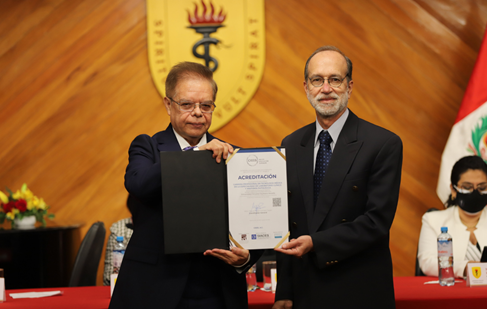
Acreditación Nacional
El Sistema Nacional de Evaluación, Acreditación y Certificación de la Calidad Educativa (Sineace) reconoció la acreditación internacional de la carrera de Medicina de la Universidad Peruana Cayetano Heredia (UPCH) que fuera otorgada por el Instituto Internacional para el aseguramiento de la calidad del Centro Interuniversitario de Desarrollo (CINDA).

Egresados
El Sistema de Gestión de Egresados tiene como razón de ser generar información veraz, relevante y oportuna sobre la empleabilidad y el desempeño profesional del egresado con la finalidad de que ésta sea aprovechada en asegurar la calidad de la formación profesional que brinda la facultad y a la vez en la mejora continua en todos sus procesos.
Como parte del proceso de actualización y validación de datos, todos los años la Unidad organiza y lleva a cabo las ceremonias de aniversario de XXV, XL y L años.
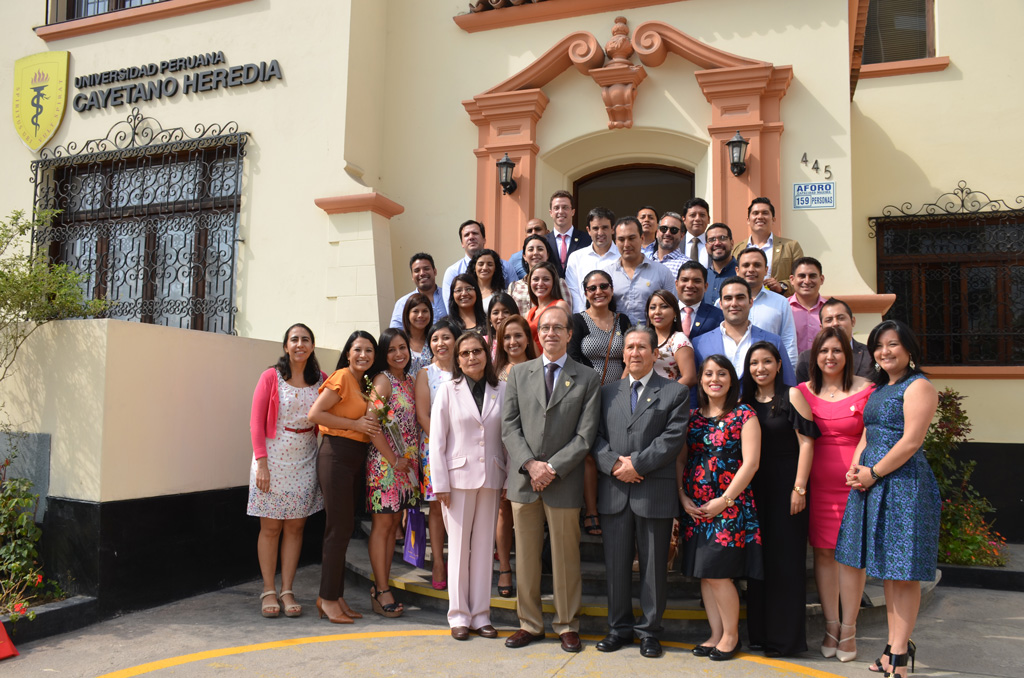
Información útil para Posgrado
Medical School Information
The medical school Facultad de Medicina Alberto Hurtado, Universidad Peruana Cayetano Heredia is the third oldest in the country and the oldest private medical school. It is devoted to medical education, research, and service on ethical, humanistic, and scientific basis. Our approach emphasizes clinical training, to which we dedicate 4 out of the 7 years of our entire academic curriculum. However, research activity is mandatory prior to graduation.
These seven years are divided in general, pre-clinical, and clinical education. General education (1st year) includes courses like Chemistry, Mathematics, Physics, Biology, and Social Sciences. Pre-clinical education (2nd and 3rd years) includes courses like Structure and Function I and II (Anatomy, Histology, Embryology, and Physiology), Epidemiology, Biochemistry, Microbiology, Psychology, Pharmacology, Pathology, Ethics, and Radiology.
Para mayor información sobre cómo postular al residentado de estados unidos, recomendamos dirigirse a las siguientes páginas web.
- Página oficial de Educational Commission for Foreign Medical Graduates (ECFMG): https://www.ecfmg.org/
- ECFMG On-line services: https://www.ecfmg.org/online-services/
Acceso a plataforma de Interactive Web Applications (IWA), información sobre vías de certificación de ECFMG, acceso a plataforma de On-line Applicant Status and Information System (OASIS), herramienta de carga de credenciales (diploma médico), World Directory of Medical Schools, acceso a plataforma de Electronic Portfolio of International Credentials
La facultad de Medicina “Alberto Hurtado” de la Universidad Peruana Cayetano Heredia realiza los siguientes trámites para egresados que están aplicando al residentado médico de los Estados Unidos:
- Status verification
- Credential verification
- Carga de documentos a la plataforma ERAS
Además, se brindan diversos servicios a egresados de la facultad que laboran en Estados Unidos, como envío de documentos para licencia médica al board estatal correspondiente, envío de documentos a través del portal DOCS, envío de documentos a través de WES, validación de documentos a través de FCSV/FSMB. Para mayor información, contactarse a famed.pregrado.asistentes@oficinas-upch.pe.
Pasos para la Homologación
Fotocopia simple de pasaporte vigente en la cual aparezcan las 4 primeras caras del mismo. Paga en el Banco de la Nación por la legalización de dicha copia.
Acude a Migraciones para solicitar copia legalizada de tu pasaporte.
Necesitas 4 documentos originales emitidos por tu universidad:
- – Título de Médico Cirujano
- – Certificado de Estudios
- – Reporte o Constancia de Equivalencia con
calificaciones del 1-10. Convierten tu notas a la escala de España. - – Constancia de Carga Horaria
Verifica que estos 4 documentos estén sellados y firmados (en todas las hojas/caras) por el Decano de tu facultad y el Secretario General de la universidad.
Sabiendo el tiempo estimado en el cual se te van a entregar o enviar estos documentos, deberás separar una cita en Relaciones Exteriores para la apostilla, ya que esta se debe sacar con semanas de antelación.
Realiza la verificación de firmas o certificación por la SUNEDU de los cuatro documentos mencionados anteriormente.
Por la emergencia sanitaria se está atendiendo de manera online, toda la información la podrás encontrar Aquí.
Realiza la apostilla a través del Ministerio de Relaciones Exteriores (Jr. Lampa 580, Centro de Lima)
Son cinco documentos en total con los que debes contar: pasaporte, Certificado de Estudios, Título de Médico, Carga Horaria y Equivalencia de notas.
Actualmente es necesario pedir cita previa para poder realizar la apostilla.
Serán los documentos originales, una vez autentificados y apostillados, los que se presenten en la Oficina Cultural de la EMBAJADA DE ESPAÑA en Lima. Este organismo actualmente ya está dando citas.
Ya con la cita, no olvides:
- – Descargar y llenar el formato de solicitud de homologación AQUÍ:
Se recomienda obtener su fotocopia una vez firmado para usarlo como CARGO.
- – Pagar las tasas de la homologación: El abono de la tasa se realizará mediante transferencia bancaria a favor del Ministerio de Ciencia, Innovación y Universidades en la cuenta restringida de recaudación de tasas en el extranjero: cuenta ES16 9000 0001 2002 5310 8022 del Banco de España, con domicilio en Calle de Alcalá, 48, 28014 Madrid (España). El monto a transferir actualmente es de 164,85 Euros.
El día de tu cita en la Embajada lleva todos tus documentos y tu pasaporte original.
No olvides solicitar un cargo.
Posteriormente los documentos originales serán devueltos.
Cuando los documentos originales hayan sido devueltos, el Ministerio de Ciencia, Innovación y Universidades o el Ministerio de Educación y Formación profesional de España se encarga de expedir los certificados de homologación en un plazo de 15-18 meses.
Si cometiste un error, te falta algún documento, o te observan algo, tendrás que subsanar/corregir y posiblemente adjuntar más documentos. En la página Web del Ministerio de Educación y Formación Profesional de España es posible buscar más información oficial sobre el proceso y crear una cuenta en la sede electrónica de ese Ministerio para poder realizar seguimiento a tu trámite.
Pasos para la Homologación
1
Fotocopia simple de pasaporte vigente en la cual aparezcan las 4 primeras caras del mismo.
Paga en el Banco de la Nación por la legalización de dicha copia.
2
Acude a Migraciones para solicitar copia legalizada de tu pasaporte.
3
Necesitas 4 documentos originales emitidos por tu universidad:
- Título de Médico Cirujano
- Certificado de Estudios
- Reporte o Constancia de Equivalencia con
calificaciones del 1-10. Convierten tu notas a la escala de España. - Constancia de Carga Horaria
Verifica que estos 4 documentos estén sellados y firmados (en todas las hojas/caras) por el Decano de tu facultad y el Secretario General de la universidad.
Sabiendo el tiempo estimado en el cual se te van a entregar o enviar estos documentos, deberás separar una cita en Relaciones Exteriores para la apostilla, ya que esta se debe sacar con semanas de antelación.
4
Realiza la verificación de firmas o certificación por la SUNEDU de los cuatro documentos
mencionados anteriormente.
Por la emergencia sanitaria se está atendiendo de manera online, toda la información la podrás encontrar AQUÍ.
5
Realiza la apostilla a través del Ministerio de Relaciones Exteriores (Jr. Lampa 580,
Centro de Lima).
Son cinco documentos en total con los que debes contar: pasaporte, Certificado de Estudios, Título de Médico, Carga Horaria y Equivalencia de notas.
Actualmente es necesario pedir cita previa para poder realizar la apostilla.
6
Serán los documentos originales, una vez autentificados y apostillados,
los que se presenten de forma digital o presencial AQUÍ.
7
Ya con la cita, no olvides:
- Descargar y llenar el formato de solicitud de homologación AQUÍ.
Se recomienda obtener su fotocopia una vez firmado para usarlo como CARGO.
- Pagar las tasas de la homologación: El abono de la tasa se realizará mediante transferencia bancaria a favor del Ministerio de Ciencia, Innovación y Universidades en la cuenta restringida de recaudación de tasas en el extranjero: cuenta ES16 9000 0001 2002 5310 8022 del Banco de España, con domicilio en Calle de Alcalá, 48, 28014 Madrid (España). El monto a transferir actualmente es de 164,85 Euros.
8
El día de tu cita en la Embajada lleva todos tus documentos y tu pasaporte original.
No olvides solicitar un cargo.
Posteriormente los documentos originales serán devueltos.
9
Cuando los documentos originales hayan sido devueltos, el Ministerio de Ciencia,
Innovación y Universidades o el Ministerio de Educación y Formación profesional de España se encarga de expedir los certificados de homologación en un plazo de 15-18 meses.
Si cometiste un error, te falta algún documento, o te observan algo, tendrás que subsanar/corregir y posiblemente adjuntar más documentos. En la página Web del Ministerio de Educación y Formación Profesional de España es posible buscar más información oficial sobre el proceso y crear una cuenta en la sede electrónica de ese Ministerio para poder realizar seguimiento a tu trámite.
La facultad de Medicina “Alberto Hurtado” de la Universidad Peruana Cayetano Heredia valida documentos para el residentado de Canadá y el Reino Unido a través de la plataforma de ECFMG.
Para mayor información, contactarse a famed.pregrado.asistentes@oficinas-upch.pe.
Facultad de Medicina
Av. Honorio Delgado 430, Urb. Ingeniería, Lima – Perú
fmee.tramite.documentario@oficinas-upch.pe
(511) 319-0000 anexo 222205

